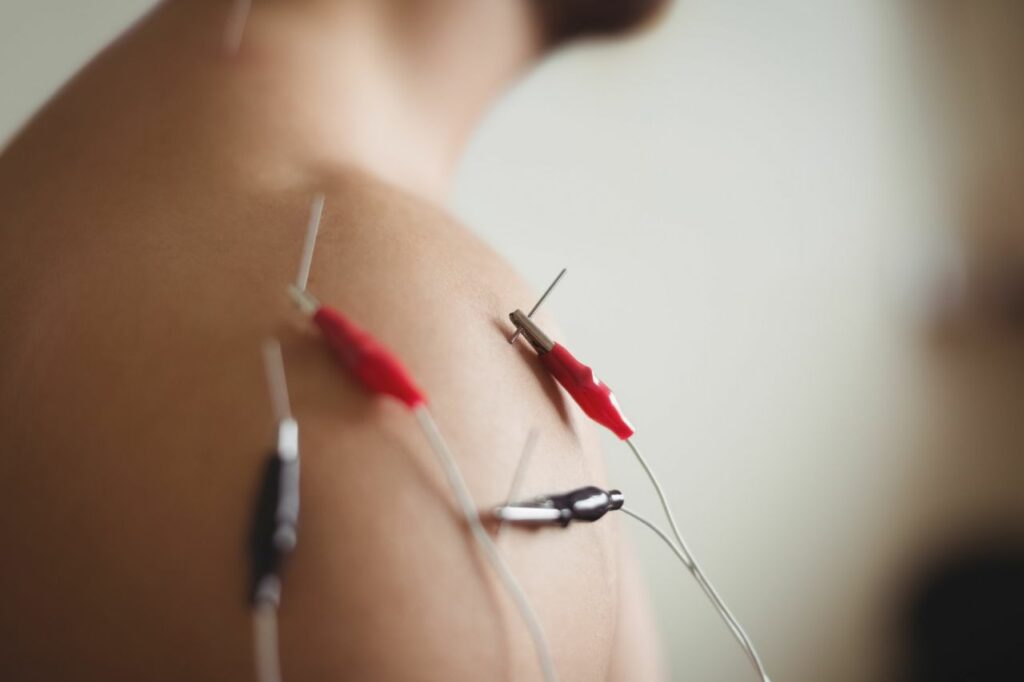
Chronic pain significantly reduces quality of life, affecting millions globally. Conditions commonly causing chronic pain include issues with the shoulder, foot and ankle, lower back, and knee. When traditional treatments fail, Peripheral Nerve Stimulation (PNS) emerges as an innovative, minimally invasive alternative.
Understanding Peripheral Nerve Stimulation
PNS directly targets nerves transmitting pain signals, effectively interrupting these signals before reaching the brain. Two notable FDA-cleared systems are the Nalu and SPRINT PNS Systems:
· Nalu PNS System: Involves ultra-thin wires (leads) placed under the skin connected to a micro-IPG device, delivering mild electrical pulses to disrupt pain signaling. Its rechargeable Therapy Disc eliminates frequent battery replacement.
· SPRINT PNS System: Employs a temporary, minimally invasive lead called the MicroLead placed near nerves causing pain. This 60-day treatment often delivers durable relief without the need for medications or permanent implants.
Clinical Effectiveness and Research Support
Clinical evidence strongly supports PNS effectiveness:
· Pain Reduction: Research consistently shows that approximately 70–80% of patients experience significant reductions in pain severity and frequency after PNS treatment.
· Long-Term Effectiveness: Studies document pain relief extending up to 14 months post-treatment, emphasizing PNS’s role as a reliable, non-opioid pain management option.
· Functional Improvement: Recent studies highlight significant improvements in physical function and quality of life, including increased mobility and reduced pain interference in daily activities following PNS treatment.
· Minimal Side Effects: Most patients report minimal complications, commonly mild skin irritation or discomfort at the insertion site. Serious adverse events are rare, and device-related complications like lead fractures are exceptionally low due to advanced technology.
Common Nerve Targets for PNS
Clinical guidelines identify over 20 peripheral nerves ideal for PNS treatment:
· Upper Extremity: Suprascapular, axillary, radial, median, and ulnar nerves.
· Lower Extremity: Sciatic, femoral, tibial, common peroneal, and genicular nerves.
· Trunk and Back: Medial branch nerves, intercostal nerves, and cluneal nerves.
Each nerve site provides targeted relief for different types of chronic pain, such as neuropathic pain, phantom limb pain, postoperative pain, and chronic musculoskeletal pain.
Procedure: Detailed Overview
The PNS procedure typically includes the following stages:
· Consultation and Preoperative Assessment: A thorough evaluation to confirm PNS suitability. Diagnostic nerve blocks or temporary PNS trials may be used to predict patient response.
· Lead Implantation: Ultrasound-guided placement ensures precise targeting, reducing the risk of complications like nerve or vascular injury. Fluoroscopy may be used for nerve targets harder to visualize.
· Postoperative Care: Patients receive detailed instructions regarding device use, site care, and activity modifications. Most return quickly to daily routines.
Safety and Best Practices
According to guidelines by the American Society of Pain and Neuroscience, PNS carries a low-to-intermediate risk for bleeding and complications, provided careful assessment and ultrasound guidance are employed. Psychological evaluation may also be advised for optimal outcomes, given the complex nature of chronic pain.
Broader Insights from Recent Research
Recent studies demonstrate that PNS significantly improves patient outcomes beyond pain relief, such as increased functional mobility and enhanced quality of life, particularly in challenging cases like persistent postoperative pain after knee replacement. Importantly, PNS has also shown effectiveness in real-world clinical settings, with a broad range of patient populations and types of chronic pain conditions responding positively. These findings suggest PNS should be considered early in treatment for suitable patients, potentially preventing chronic pain development after surgeries or injuries.
Is Peripheral Nerve Stimulation Right for You?
PNS is ideal if you:
· Have not found relief from conventional therapies.
· Prefer minimally invasive, reversible treatments.
· Seek a drug-free pain management alternative.
Final Thoughts
Peripheral Nerve Stimulation represents a significant advancement in chronic pain management, offering long-term relief and functional improvement through targeted nerve stimulation. Discuss with your healthcare provider if this innovative therapy aligns with your needs, and take the first step toward reclaiming your life from chronic pain.
